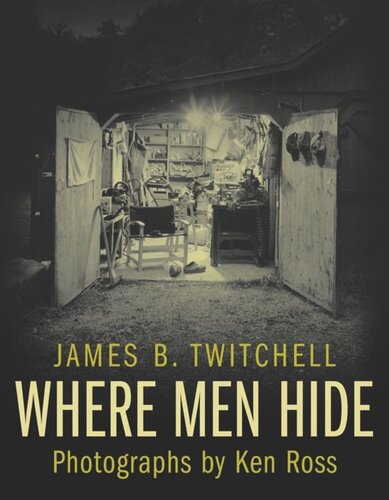

Most ebook files are in PDF format, so you can easily read them using various software such as Foxit Reader or directly on the Google Chrome browser.
Some ebook files are released by publishers in other formats such as .awz, .mobi, .epub, .fb2, etc. You may need to install specific software to read these formats on mobile/PC, such as Calibre.
Please read the tutorial at this link: https://ebookbell.com/faq
We offer FREE conversion to the popular formats you request; however, this may take some time. Therefore, right after payment, please email us, and we will try to provide the service as quickly as possible.
For some exceptional file formats or broken links (if any), please refrain from opening any disputes. Instead, email us first, and we will try to assist within a maximum of 6 hours.
EbookBell Team

4.3
48 reviewsWhere Men Hide is a spirited tour of the dark and often dirty places men go to find comfort, camaraderie, relaxation, and escape. Ken Ross's striking photographs and James B. Twitchell's lively analysis trace the evolution of these virtual caves, and question why they are rapidly disappearing. They find that for centuries men have met with each other in underground lairs and clubhouses to conduct business or to bond and indulge in shady entertainments. In these secret dens, certain rules are abandoned while others are obeyed. Twitchell connects the places men hide with figures like Hemingway and Huck Finn, Frederick Jackson Turner's theory of the American frontier, and the mythological interpretations of Joseph Campbell and Robert Bly. Documenting both traditional and contemporary male haunts, Twitchell and Ross examine the provenance, purpose, and appeal of this little-discussed and controversial phenomenon.
"If you ask men if they spend any time hiding, they usually look at you as if you're nuts. 'What, me hide?' But if you ask women whether men hide, they immediately know what you mean."—from Where Men Hide
Where Men Hide is a spirited tour of the dark and often dirty places men go to find comfort, camaraderie, relaxation, and escape. Ken Ross's striking photographs and James Twitchell's lively analysis trace the evolution of these virtual caves, and question why they are rapidly disappearing.
Ross documents both traditional and contemporary male haunts, such as bars, barbershops, lodges, pool halls, strip clubs, garages, deer camps, megachurches, the basement Barcalounger, and Twitchell examines their provenance, purpose, and appeal. He finds that for centuries men have met with each other in underground lairs and clubhouses to conduct business or, in the case of strip clubs and the modern rec room, to bond and indulge in shady entertainments. In these secret dens, certain rules are abandoned while others are obeyed. However, Twitchell sees this less as exclusionary behavior and more as the result of social anxiety: when women want to get together, they just do it; when men get together, it's a production.
Drawing on literary, historical, and pop cultural sources, Twitchell connects the places men hide with figures like Hemingway and Huck Finn, Frederick Jackson Turner's theory of the American frontier, and the mythological interpretations of Joseph Campbell and Robert Bly. Instead of blaming the disappearance of the man-cave solely on feminism, simple fair play, or the demands of Title IX, Twitchell believes this evaporation is due as well to the rise of solitary pursuits such as driving, watching television, and playing videogames.
By blending together anecdote, research, and keen observation, Ross and Twitchell bring this little-discussed and controversial phenomenon to light.